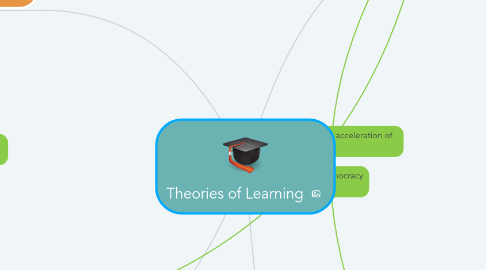
1. Classical
1.1. Liberal Arts
1.1.1. Purpose: To develop intellectual powers of the mind; to enhance the broadest learning; to provide a general-educated person
1.1.2. Theorists: Aristotle, Rousseau, Piaget, Hirsch
1.1.2.1. Teacher: Expert who transmits knowledge; establishes base of knowledge and then challenges students to critically think; directs the learning process
1.1.2.2. Learner: Life-long Learner; Knowledge is an end to itself; Discover/develop the Theories that explain Nature
1.1.2.3. Methods of Instruction: Lecture, Reading, Critical Analysis, Socratic Dialogue, Essay Testing, Literacy; competitive grading
2. Industrial
2.1. Behavioral
2.1.1. Purpose: To promote competence, skill development, and behavioral change; to comply with societal expectations and standards
2.1.2. Theorists: Augustine of Hippo, Thomas Aquinas, Thorndike, Skinner, Nadler
2.1.2.1. Teacher: Supervisor, Instructor; Sets expectations; demonstrates mastery; directs learning outcomes
2.1.2.2. Learner: Learn mastery of the process; practice behaviors/skills; knowledge is means to a different end
2.1.2.3. Methods of Instruction: Competency-based instruction; formative/summative assessments; demonstrate and then practice; Design methodology; test based on objective criteria; go/no-go grading
3. Post-Industrial
3.1. Progressive
3.1.1. Purpose: To support responsible participation in society; to give learners practical knowledge and skills at solving problems
3.1.2. Theorists: Dewey, Lindeman
3.1.2.1. Teacher: Guide on the side; coach; organizes the learning process; uses real-life applications; guides collaboration
3.1.2.2. Learners: Learner needs/attributes drive learning objectives; experiences are valued; active learning is emphasized
3.1.2.3. Methods of Instruction: Projects; scientific or experimental methods; simulations; cooperative learning; portfolios; pass/not pass style grading
3.2. Radical
3.2.1. Purpose: To bring about social, economic, cultural, and political change through education
3.2.2. Theorists: Freire, Perelman
3.2.2.1. Teacher: Coordinator; equal partner with learner; suggests but does not direct learning
3.2.2.2. Learner: Learner is empowered; learner partners with teacher to determine the learning; personal autonomy; self-directed
3.2.2.3. Methods of Instruction: Critical theories explored; equality and justice underpin learner model; problems are posed and not solved; social action theater; media analysis
3.3. Humanistic
3.3.1. Purpose: To develop personal growth; to facilitate individual self-actualization
3.3.2. Theorists: Maslow, Knowles
3.3.2.1. Teacher: Facilitator; moderator; mentor; partner-in-teaching; exchanges ideas on learning and supports the learning process rather than directs it
3.3.2.2. Learner: Learner is self-directed and motivated; assumes responsibility for learning; involved in planning learning projects
3.3.2.3. Methods of Instruction: Experiential learning; discovery learning; collaborative projects; self-paced; independent study; self and peer-assessment
4. Information
4.1. Post-Modern Theories
4.1.1. Purpose: To challenge accepted and unexamined truths; to shatter paradigms to expose knowledge to non-dogmatic forms of thought
4.1.2. Theorists: Gergen, Kilgore
4.1.2.1. Teacher: Servant-leader; coordinates; leads questioning; does not provide answers; flattened class structure; learning goes where the individual and group decides
4.1.2.2. Leaner: Learner questions everything; truth is point of view; truth is what we agree upon; everything is relative; access to infinite amount of data and infinite amount of collaboration
4.1.2.3. Method of Instruction: deconstruction of closely-held truths; analysis of historiography; projects that focus on causality

